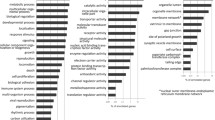Abstract.
Parasitic nematodes secrete a structurally novel class of fatty acid and retinol-binding (FAR) protein into the surrounding tissues of the host. These proteins are of interest because they may play an important role in scavenging fatty acids and retinoids from the host that are essential for the survival of the parasite and also because the localised depletion of such lipids may have immunomodulatory effects that compromise the host immune response. Research into the biological function(s) of the FAR proteins has been severely hampered by the difficulties associated with the life-cycle propagation of parasitic nematodes and the current intractability of the parasites to reverse-genetic studies. The genome of the free-living nematode Caenorhabditis elegans, however, encodes eight FAR-like proteins, and in this review we compare the FAR proteins of C. elegans and parasitic nematodes, and we discuss the suitability of C. elegans as a model system to investigate the biological function(s) of the FAR proteins of parasitic nematodes.
Similar content being viewed by others
Author information
Authors and Affiliations
Additional information
Electronic Publication
Rights and permissions
About this article
Cite this article
Garofalo, A., Kennedy, M.W. & Bradley, J.E. The FAR proteins of parasitic nematodes: their possible involvement in the pathogenesis of infection and the use of Caenorhabditis elegans as a model system to evaluate their function.. Med Microbiol Immunol 192, 47–52 (2003). https://doi.org/10.1007/s00430-002-0158-6
Received:
Accepted:
Issue Date:
DOI: https://doi.org/10.1007/s00430-002-0158-6




